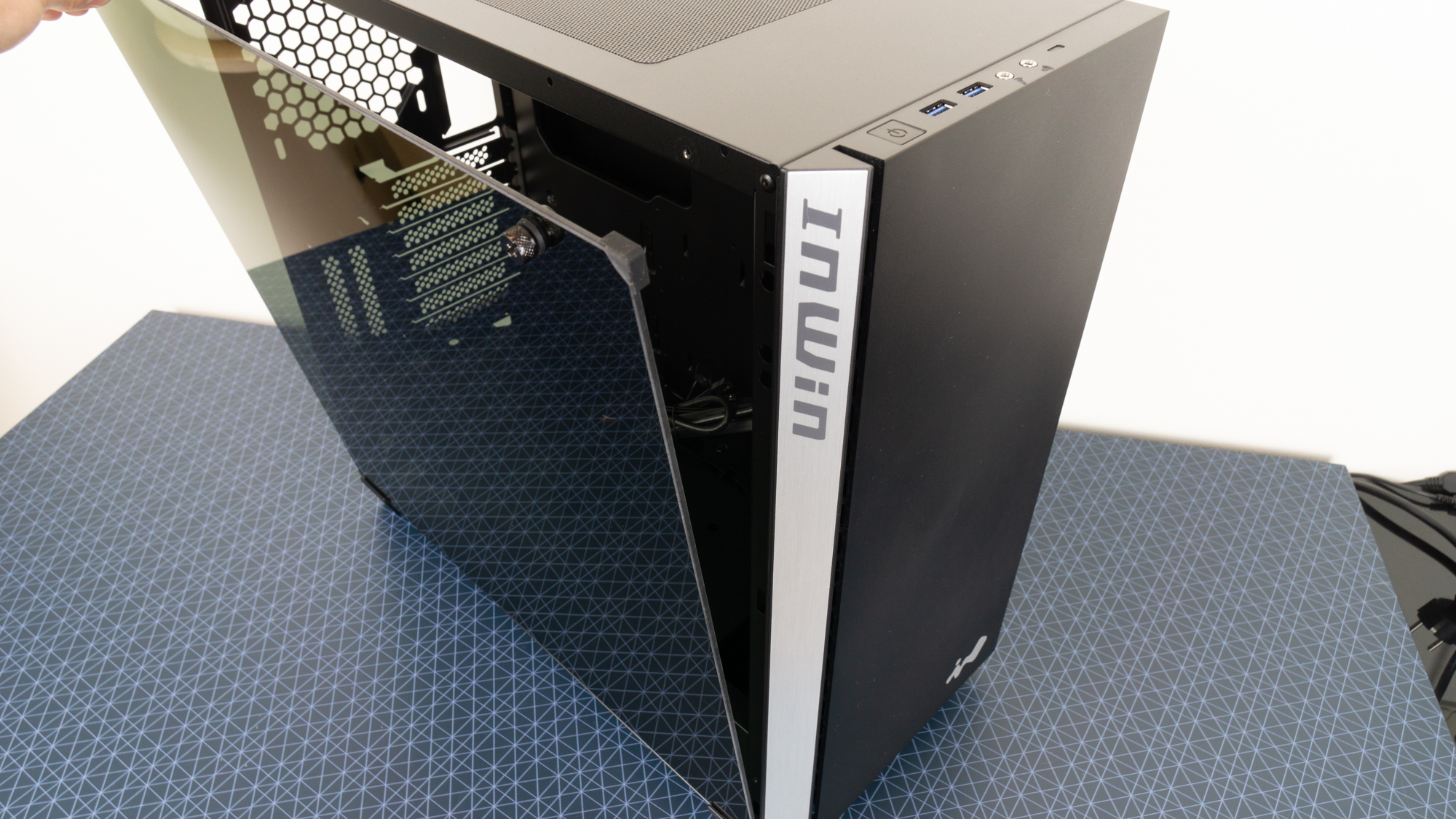Tom's Hardware Verdict
InWin’s 216 comes without fans, but does include design oversights. It looks clean on the outside, but there are better options in the crowded sub-$100 chassis space.
Pros
- +
Sleek looks
- +
Magnets prevent glass panel from falling
- +
Extreme tint on glass hides component mismatching
Cons
- -
No included fans
- -
No USB Type-C
- -
Only supports 120mm fans, despite its size.
- -
No top-mounted AIO supported
- -
Lackluster cable management
Why you can trust Tom's Hardware
The InWin 216 delivers E-ATX support without being too big, and comes with sleek looks and a hint of flair thanks to the large InWin logo and text. There is no RGB to be found here, or any fans. This is a chassis for those who just want a big, practical build box that doesn’t stand out too much and who will bring their own spinners.
At $80, it’s also not an expensive case. The front panel is made of plastic, so the case is clearly not built to a premium finish, but the tempered-glass panel is appreciated. Still, there’s a lot of competition in this segment. We’ll find out later in this review whether the InWin 216 deserves a spot on our best PC cases list, but if you’ve read this far, you can probably guess the answer.
InWin 216 Specifications
| Type | Mid-Tower ATX |
|---|---|
| Motherboard Support | Mini-ITX, Micro-ATX, ATX, E-ATX |
| Dimensions (HxWxD) | 18.3 x 8.7 x 18.1 inches (465 x 220 x 460mm) |
| Space Above Motherboard | 0.9 inches (23mm) |
| Max GPU Length | 15 inches (380mm) |
| CPU Cooler Height | 6.5 inches (166mm) |
| Max PSU Length | 220 mm |
| Weight | 16.1 pounds (7.3 kg) |
| External Bays | ✗ |
| Internal Bays | 2x 3.5-inch, 2x 2.5-inch |
| Expansion Slots | 7x + 2x vertical |
| Front I/O | 2x USB 3.0, 3.5 mm Audio, 3.5 mm Mic |
| Other | Tempered Glass Panel |
| Front Fans | Up to 3x 120mm |
| Rear Fans | Up to 1x 120mm |
| Top Fans | Up to 2x 120mm |
| Bottom Fans | ✗ |
| Side Fans | ✗ |
| RGB | No |
| Damping | No |
| Warranty | 1 Year |
InWin’s 216 is a rather standard ATX mid-tower, but it comes with space for E-ATX motherboards up to 12 x 13 inches in size. The front facade is made from ABS plastic, though it has a nice matte finish that hides the cheapness, along with an aluminum edge strip as an accent.
Features of InWin 216
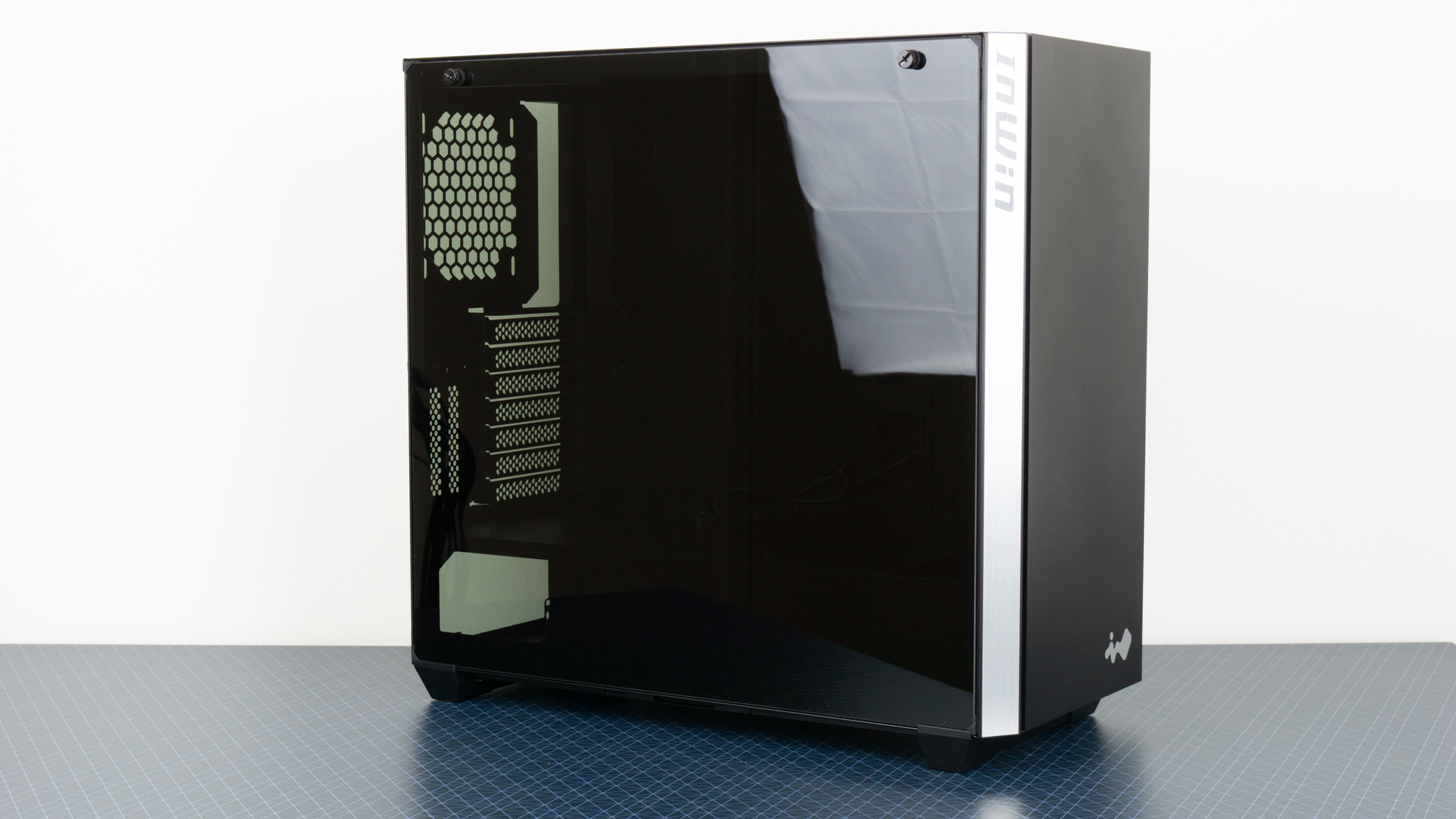
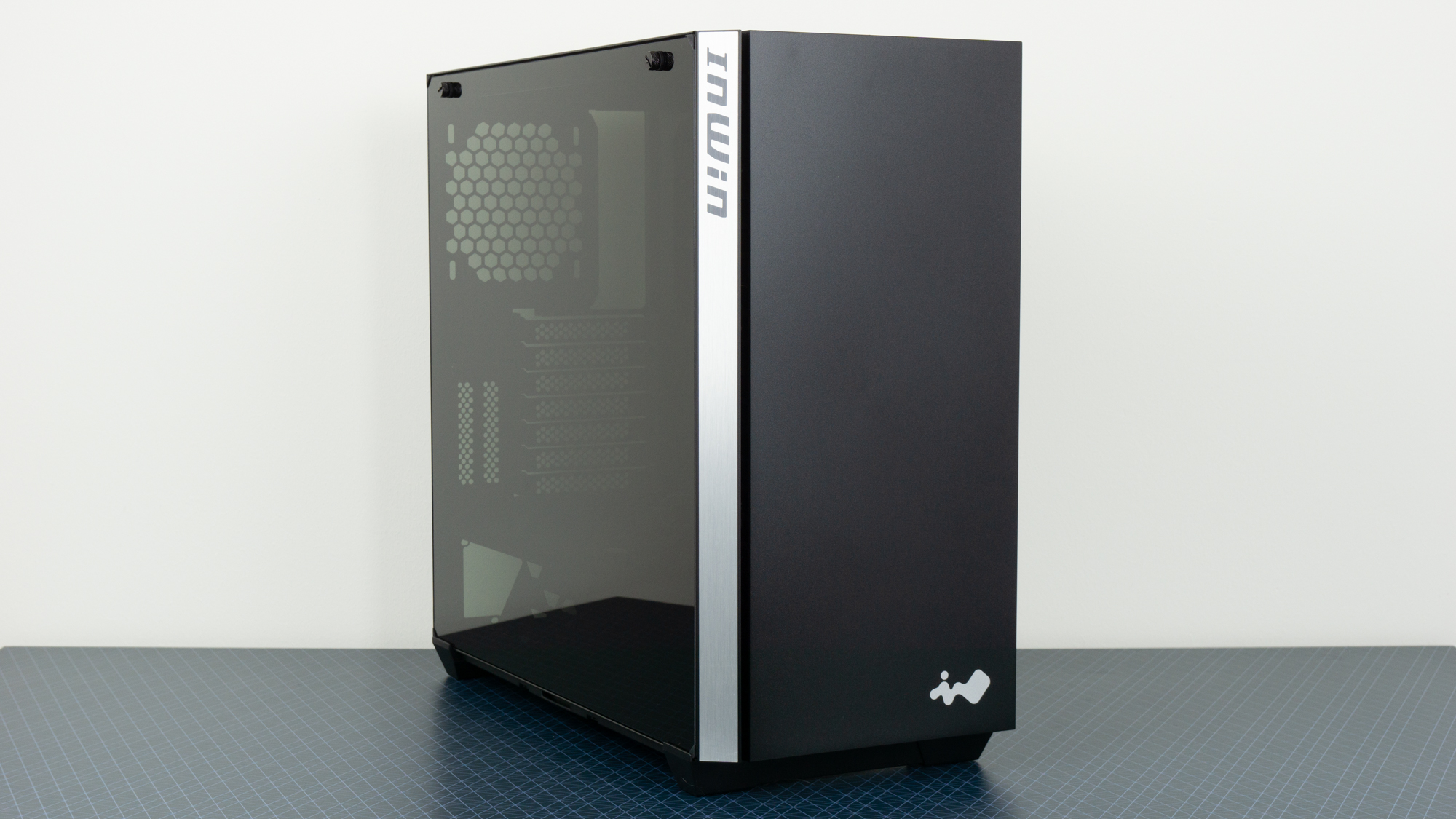
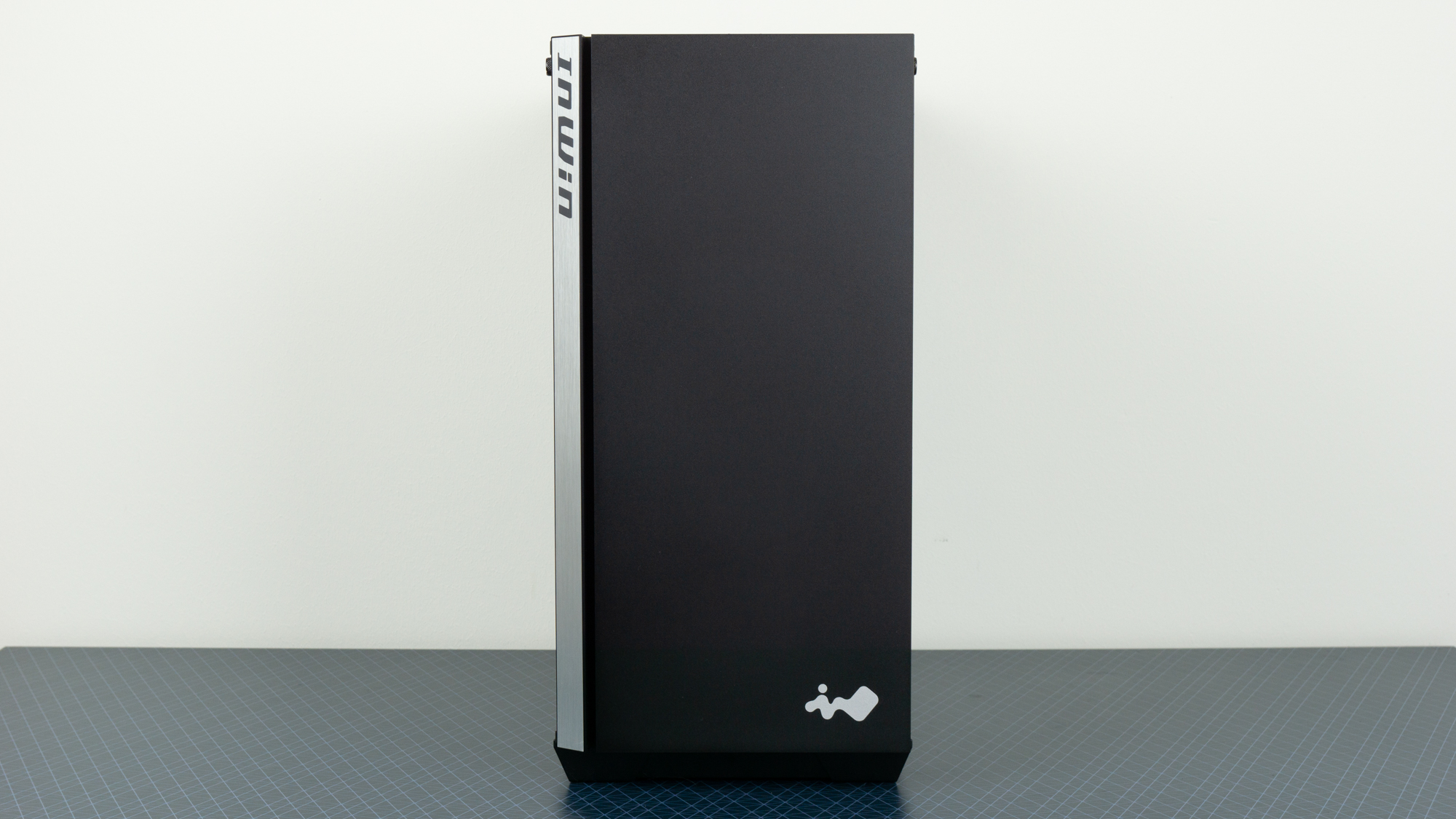
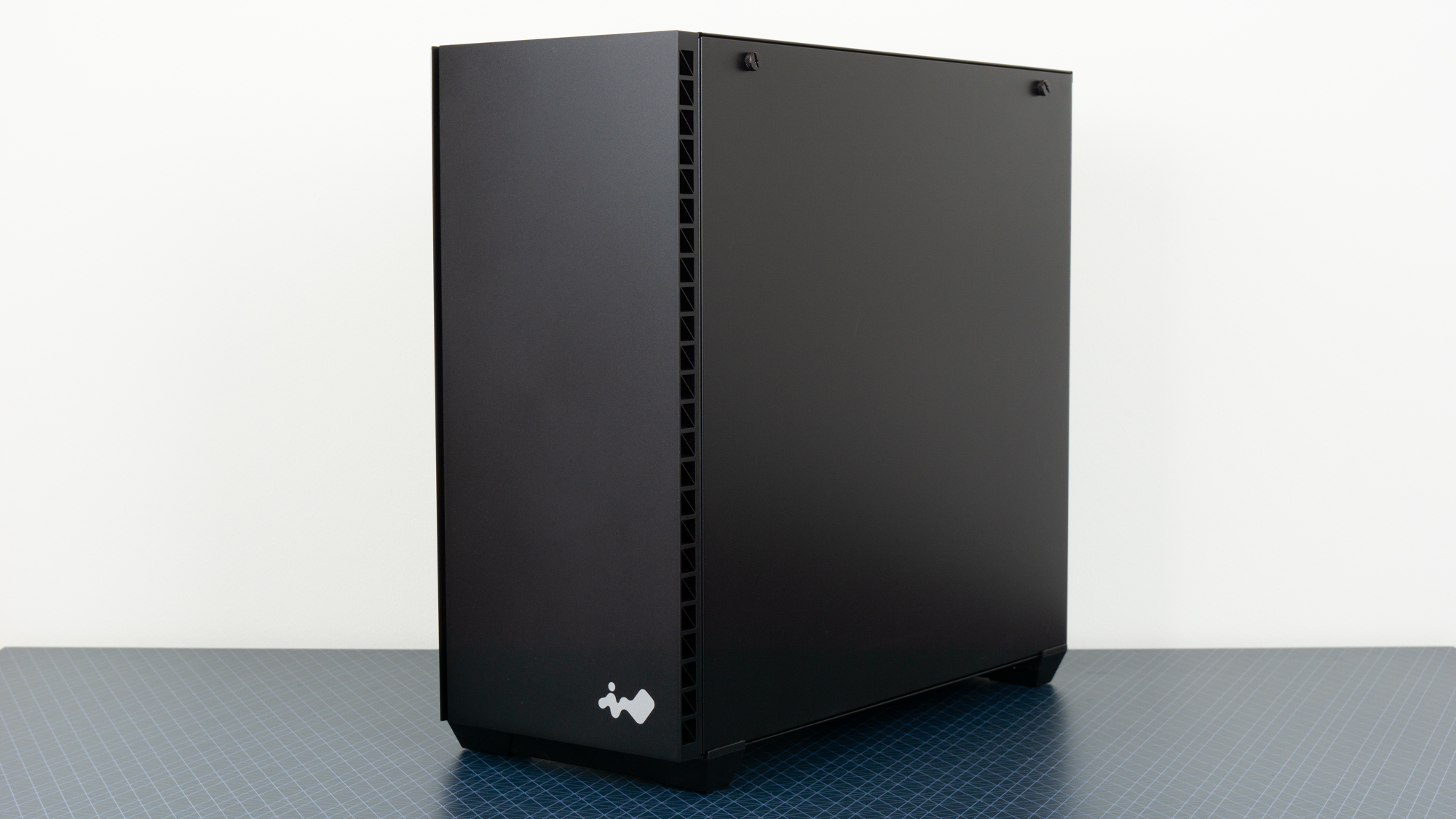
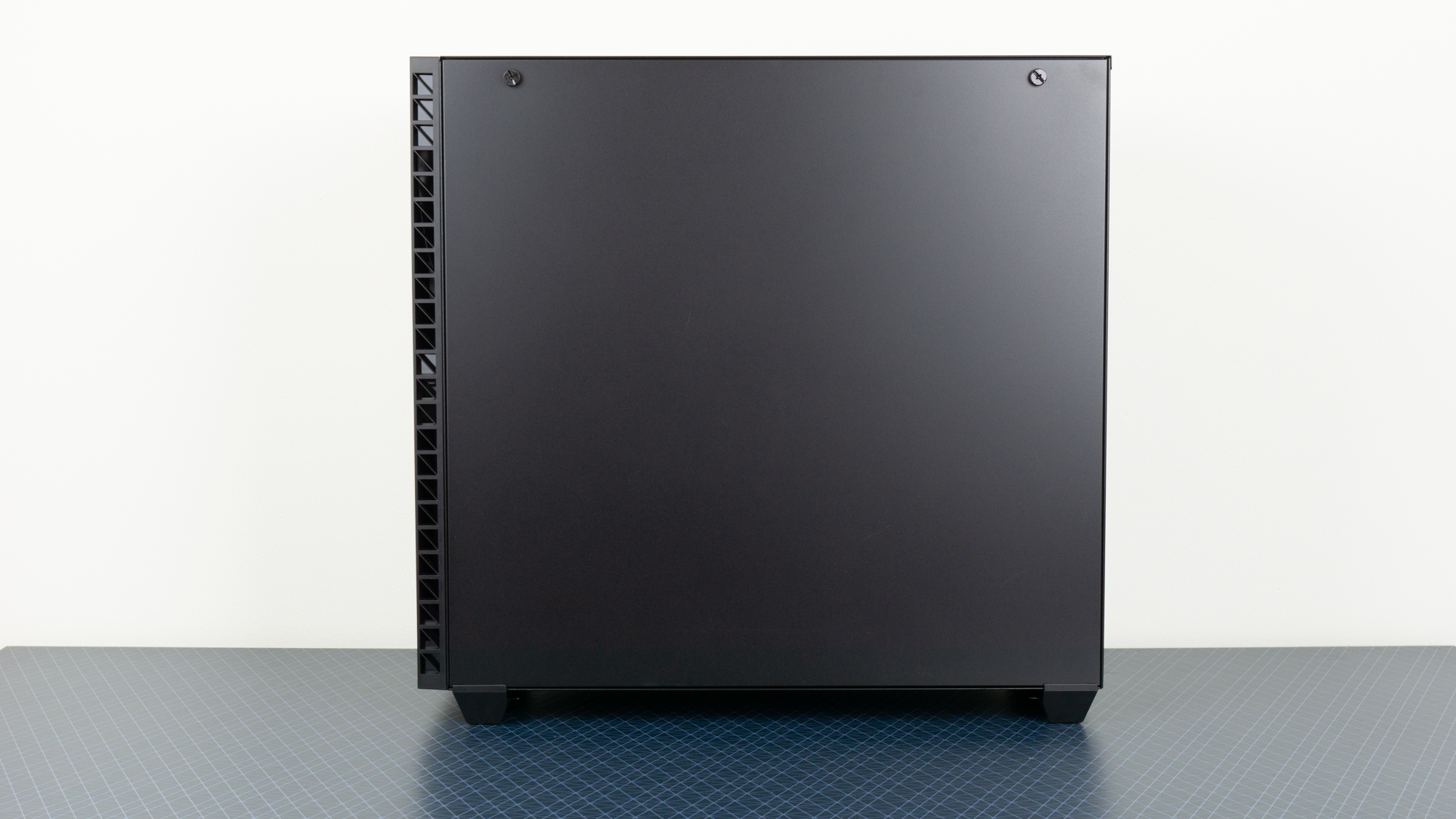
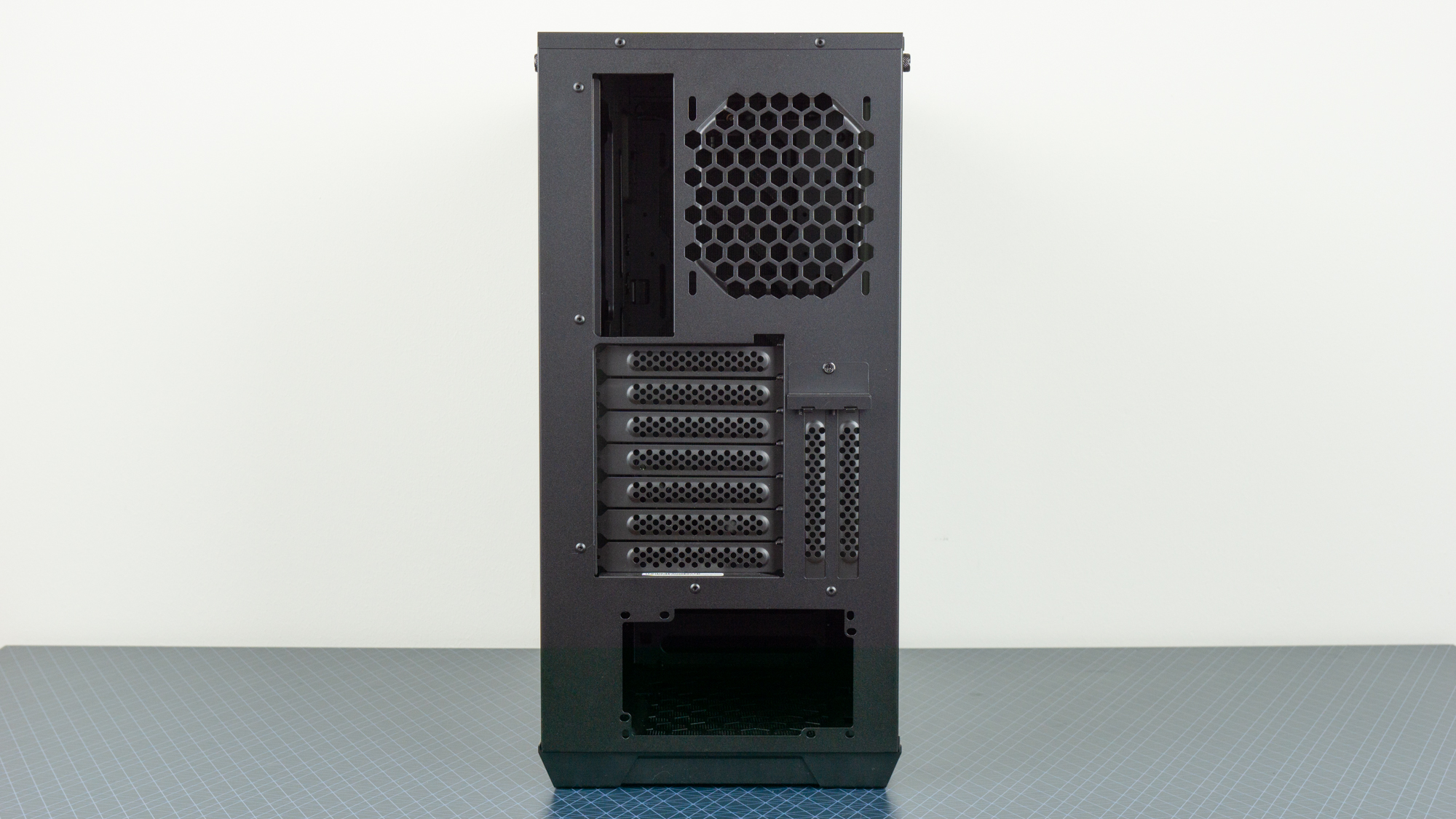
The left side is a tempered-glass panel with a very dark, almost green tint. In some respects, the dark tint is great, because the interior is messy and cables are difficult to manage nicely. The tint hides all of that and is forgiving on stylistically mismatched components. The glass panel, as well as the panel covering the cable management side, both drop into the feet of the chassis at the bottom, and then use two thumbscrews at the top to stay secure.
The glass also comes with built-in magnets to keep it in place during installing or removing screws, which is a very thoughtful feature. But, with only thumbscrews at the top, it’s an awkward look between all thumbscrews on the side, or no thumbscrews at all.
Atop the chassis is the front IO, which consists of the usual pair of USB 3.0 ports, headphone and mic jacks, and a power button. There is a spot where a USB Type-C port would have been installed, as you can see molded into the plastic, but there is none present.
InWin 216 Internal Layout
The interior of the InWin 216 is rather plain and gives up a few curious design choices. Although there is space for up to E-ATX motherboards, lots of space goes wasted past the motherboard that doesn’t appear to be useful for anything in particular. The good thing about this: large 380 mm (15 inch) GPUs are supported, though it’s rare to ever see one that big. CPU coolers can be up to 166 mm (6.3 inches) tall.
Get Tom's Hardware's best news and in-depth reviews, straight to your inbox.
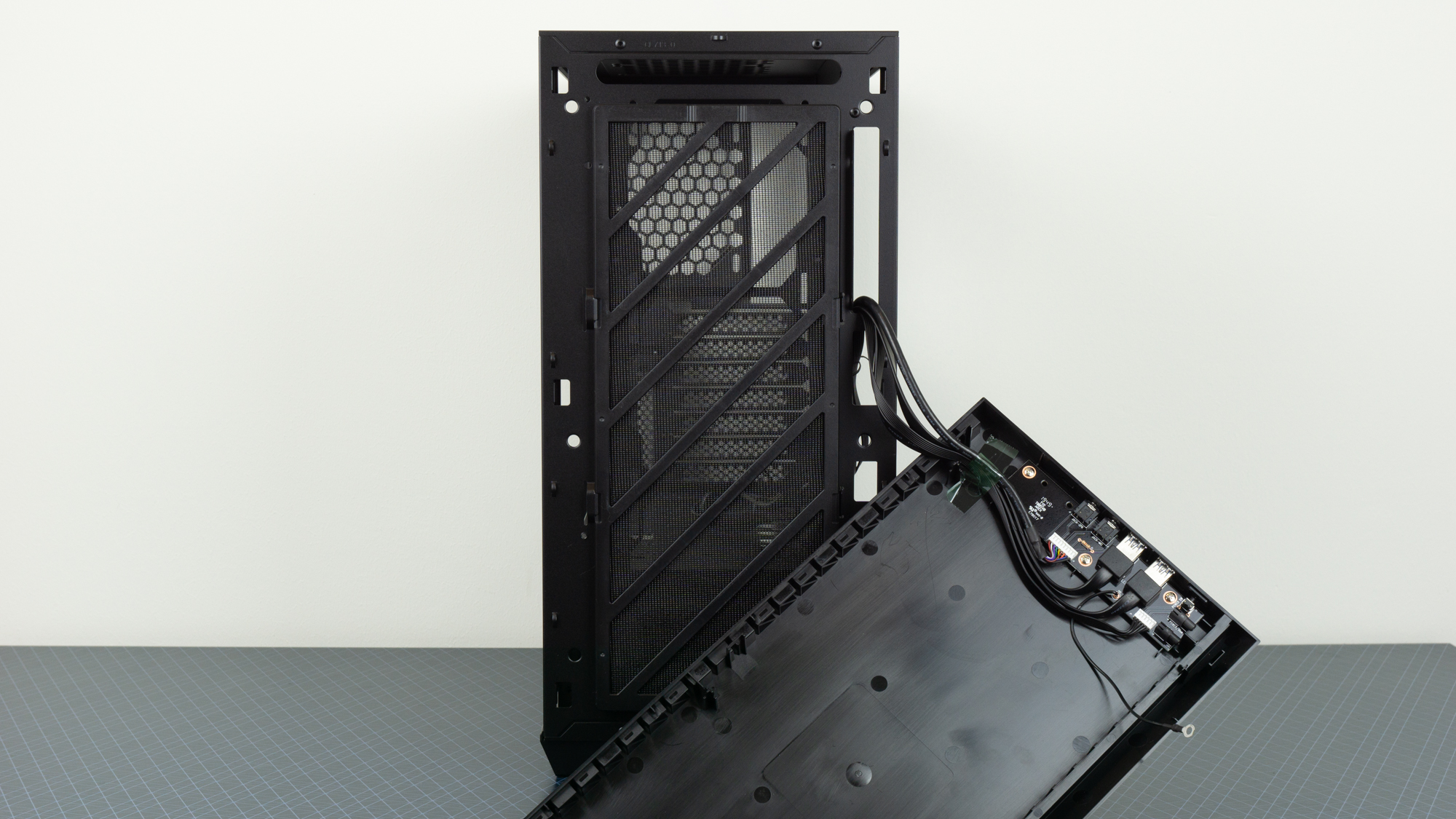


Underneath the PSU shroud there’s ample space for the power supply, along with caddies for two 3.5-inch drives. Two 2.5-inch drives fit behind the motherboard tray.
But we’re not a fan of the interior. There are lots of cutouts that don’t seem to have a purpose, and they don’t make cable management easy as more cables end up visible. For a chassis that supports E-ATX motherboards and has this much wasted space, the choice to only make room for two 3.5-inch drives is also puzzling, as many buyers in this segment likely want more space for hard drives. And there’s no shortage of space for them here.
InWin 216 Cooling
As noted up top, InWin does not include any fans with the 216. That’s a decision that has some merit to it, as many enthusiasts do like to pick their own fans over the cheap ones that typically come included with budget cases. But the budget InWin 216 won’t likely please that crowd, and we’ve also seen in Phanteks’ $60 Eclipse P300A that a single, cheap fan can perform adequately for many systems. Also, despite being a chassis that measures 220 mm (8.7 inches) wide, the InWin 216 only supports 120 mm fans. You can install one at the rear exhaust, two up top, and three at the intake.
The front intake is a little restrictive, but that’s alright as it’s wisely shut more on the user’s side (left) than the right, guiding the noise away from you. The front, top, and bottom also all have fan filters.
One thing to note, though, is that there is only 23 mm (that’s less than an inch) of space between the top of the motherboard and the top of the chassis. Although fans fit fine here, the positioning of the fan mounts is so close to the motherboard that you will not be able to mount a liquid cooling radiator here, so you’ll have to ensure your choice of AIO, if you choose to use one, has long enough tubing to extend to the front of the InWin 216 (or the rear exhaust if you have a 120mm AIO).
Niels Broekhuijsen is a Contributing Writer for Tom's Hardware US. He reviews cases, water cooling and pc builds.

